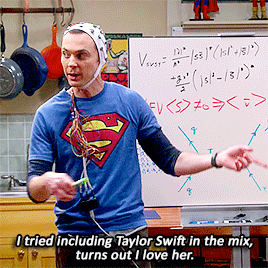Over the Easter week I read a couple of books that had been sent to me as gifts, and so I’m taking a break from my formal reviews this week to talk to you about my two “holiday reads” – one of the best-known works of contemporary translation, and the follow-up to a brilliant debut.

Elena Ferrante, My Brilliant Friend, tr. Ann Goldstein (Europa Editions, 2020; originally published 2012)
Okay, I’ll admit it: I didn’t especially want to like Ferrante. I’m not generally drawn to already-famous authors, and (possibly because whenever I say I read “women in translation” the stock response is often “oh, so you must like Elena Ferrante?”) I felt obstinate and contrary about reading Ferrante’s work until Europa sent me The Lying Life of Adults last year. I enjoyed the stand-alone novel and my introduction to Ferrante, but it’s no exaggeration to say that embarking on the Neapolitan Quartet is something I’ve been putting off for years. So… how did it go?
Well, if you’ve ever watched The Big Bang Theory, my experience of reading My Brilliant Friend was something like the time Sheldon tried to ramp up his irritation levels by listening to Taylor Swift but…

“turns out I love her”. Indeed. Turns out My Brilliant Friend is entirely deserving of all the hype. The storytelling manages to be both intimate and vast, focusing on individuals and relationships but spiralling out towards an entire community and city, and locating the region within its country’s history. After the prologue (set in the present, with the narrative then rewinding by several decades – a technique I particularly enjoy) it took me a while to get properly into the story – there is an impressive cast of characters (and, mercifully, a handy character guide at the start of the book) and though the childhood sections were necessary for background and introduction to the characters, their way of life, and their place on a generational continuum within the community, the point when I really got immersed in the story was when the two protagonists Lenù and Lila start to grow up. This is when Lenù, the narrator, begins to develop an awareness of the boundaries of her world, and the ways she both does and does not want to escape. The true focus is, of course, on Lenù’s “brilliant friend” Lila, a girl whose presence makes Lenù feel that she is truly present in the world, for “only what Lila touched became important.” This is a beautiful story of friendship and rivalry, working-class hardship and middle-class aspiration, social expectation and adolescent desire: if you’ve already read it then I can only add to the superlatives attributed to it and if, like me, you’re late to the Ferrante party, then I highly recommend you head on in.
So there it is: I’m a Ferrante convert. There is a small catch: I’ve written before about Ann Goldstein’s translations, which I find linguistically rich but occasionally jarring. It was in reading My Brilliant Friend that I realised why: at times I feel as though the story is being told to me by an Italian who hasn’t quite grasped English syntax. This clearly isn’t an impediment to communication of the story (or worldwide success), but in terms of translation it’s not my preferred approach. Nonetheless, this is a beautiful and (mostly) engagingly narrated story, heartbreaking in its daily sorrows and told with a keen eye for both intricate detail and general observation. My experience of reading it was true escapism; I felt quite bereft when I reached the end, and will certainly be reading the rest of the quartet.
Rónán Hession, Panenka (Bluemoose Books, 2021)
A rare thing for me: reading a book that’s not a translation, and not written by a woman. For this to happen it has to be a pretty special book, and if you haven’t already discovered Rónán Hession, he’s certainly a pretty special writer. His debut novel, Leonard and Hungry Paul (Bluemoose Books, 2018, reviewed here), was a runaway success, and deservedly so: its gentle warmth and understated humour were absolutely delightful, and it’s no surprise that it found its way into so many readers’ hands and hearts. With Panenka, Hession gives us something very different but no less remarkable. The heart of the novel is Joseph, a former footballer whose nickname “Panenka” is “his sadness and his story.” We meet him as he is in the grip of a debilitating headache attack that he calls “the iron mask”, and it is quickly revealed that this is a symptom of a terminal illness. In the time he has left, Panenka carries on with what he has made of his rather unspectacular life – a renewed closeness with his daughter Marie-Thérèse (an anxious supermarket team leader recently separated from her husband Vincent), an affectionate relationship with his seven-year-old grandson Arthur, a (non-football-related) job that we don’t discover much about until a dazzling final scene, and a group of affectionately antagonistic acquaintances he meets with regularly at Vincent’s, a café-bar run by his ex-son-in-law. This is a small town, and Panenka stayed there even after his footballing career was cut short by a mistake to which fans – then and ever since – have attributed the decline of the local football team, whose glory Panenka had apparently been destined to secure.
Hession’s passion for football shines through, but in a way that is entirely inclusive, and not at all off-putting to those of us less well acquainted with the beautiful game. The dissection of match performances between the gang at Vincent’s is, like all of Hession’s dialogue, perfectly observed – one of the great strengths of his writing is that it always makes me feel I’m amongst friends. In fact, if there was one criticism I could make (and you’d have to push me hard to make it) it would be that the dialogues are so perfect – none of the retrospective “why did/didn’t I say that?” angst is necessary for these characters (but then, inarticulate dialogue wouldn’t make for great reading, so this isn’t really a criticism at all). In fact the characterisation is superb, with plenty revealed about the characters but much also held back, in a way that reflects how we’d get to know people in real life. When I read Hession’s writing I can’t help imagining him observing conversations and behaviour as the years go by, so recognisably human are his characters and their interactions. There would have been plenty of opportunity for facile or schmaltzy resolutions to the various broken or fragile relationships, and Hession steers clear of this in a way that shows great tenderness for his characters. And the final scene… no spoilers, as ever, but you might want to keep a tissue handy.